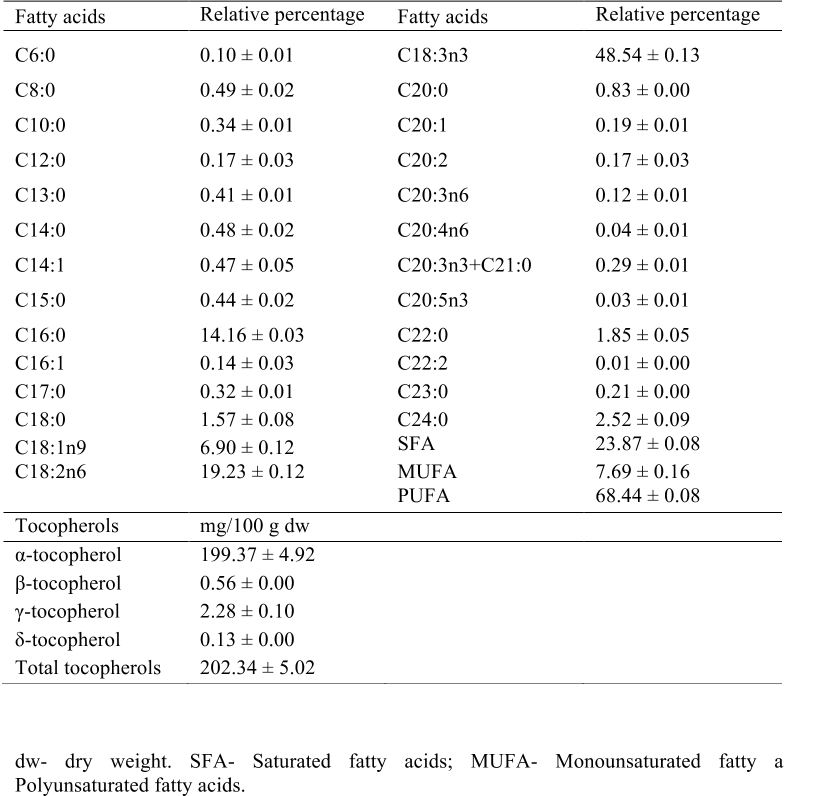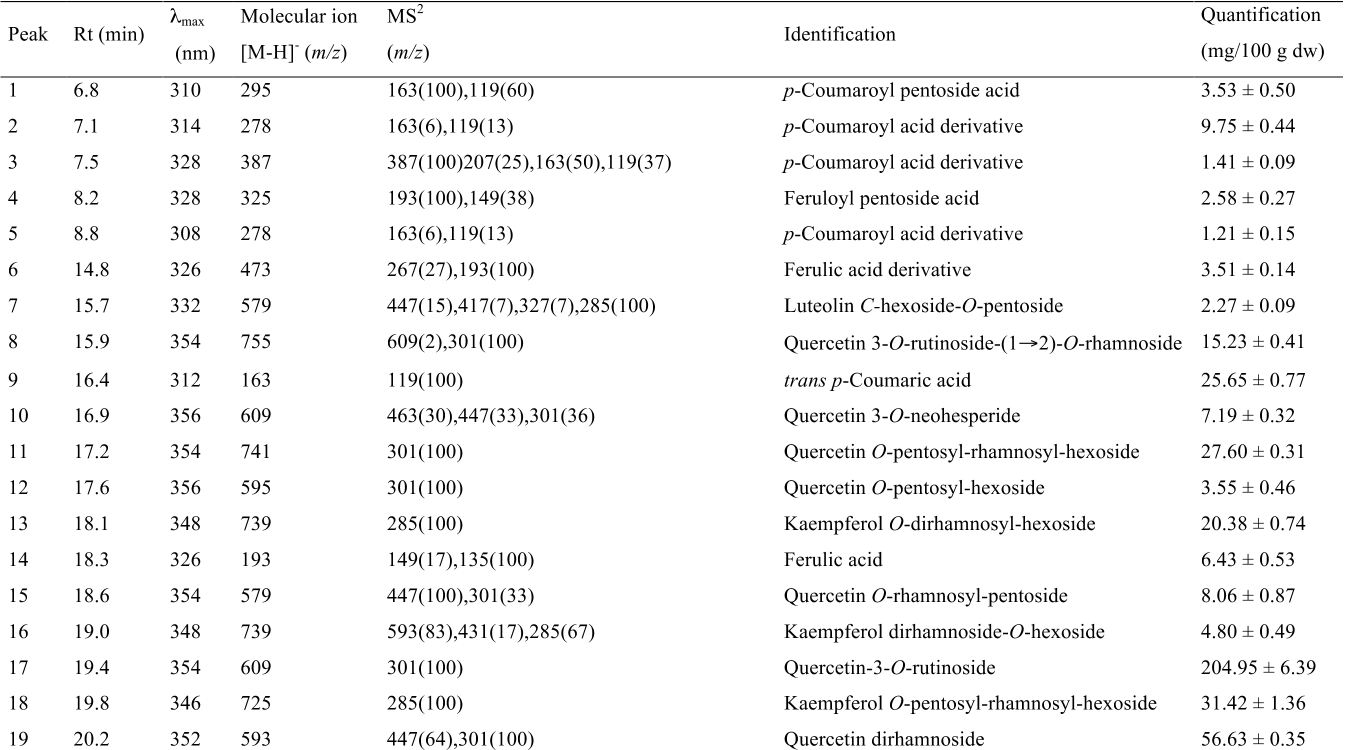Q2. What are the mechanisms of antioxidants in C. ambrosioides?
They act as antioxidants through various mechanisms, including hydrogen donating reactions, metal chelation, and up-regulation or protection of antioxidant defenses (e.g. intracellular glutathione levels) (Pereira et al.,2013).
Q3. What is the abundant phenolic compound in the plant?
Flavonoids were the major phenolic compounds present in this sample (768 mg/100 g dw), being quercetin (46.98%) and kaempferol derivatives (45.91%) the most abundant.
Q4. What cell lines were used for the study?
Five human tumour cell lines were used: MCF-7 (breast adenocarcinoma), NCI-H460 (non-small cell lung cancer), HCT-15 (colon carcinoma), HeLa (cervical carcinoma) and HepG2 (hepatocellular carcinoma).
Q5. What is the prominent PUFA in the Western diet?
Linoleic acid is the most prominent PUFA in the Western diet and previous studies showed health benefits under the prevention of cancer diseases (Whelan, 2008).
Q6. What is the way to evaluate the antioxidant activity of C. ambrosioides?
Trolox and ellipticine were used as positive controls of antioxidant and antitumour activities evaluation assays, respectively, but comparison with the samples should be avoided, because they are individual compounds and not mixtures.
Q7. What are the main diseases associated with the production of free radicals?
Relevant diseases such as cancer, diabetes, cirrhosis, heart disease or dementia disorders, as well as aging process have been associated with the uncontrolled production of free radicals (Valko et al., 2007; Halliwell, 2012).
Q8. What was the purpose of the MS detector?
The MS detector was programmed for recording in two consecutive modes: Enhanced MS (EMS) and enhanced product ion (EPI) analysis.
Q9. What were the compounds found in the extract?
Among them, five compounds (peaks 1-3, 5 and 9) were p-coumaric acid derivatives identified according to their UV spectra and pseudomolecular ion.
Q10. What is the abundant p-coumaric acid?
Phenolic acids were 6.58% of the total phenolic compounds in this sample and trans p-coumaric acid was the most abundant one (25.65 mg/100 g dw, peak 9).
Q11. What was the method used for the analysis?
The analysis was carried out with a DANI model GC 1000 instrument equipped with a split/splitless injector, a flame ionization detector (FID at 260 ºC) and a Macherey– Nagel (Düren, Germany) column (50% cyanopropyl-methyl-50% phenylmethylpolysiloxane, 30 m × 0.32 mm i.d. × 0.25 μm df).
Q12. What is the m/z of the fragments?
The fragments ions at m/z 447 and 285 would correspond to the respective losses of the pentosyl and hexosyl moieties, respectively.
Q13. What was the ion pattern of peak 4?
Peak 4 was associated to a feruloyl pentoside acid based on its molecular ion fragmentation pattern similar to peak 1, whereas no precise identity could be established for peak 6.




